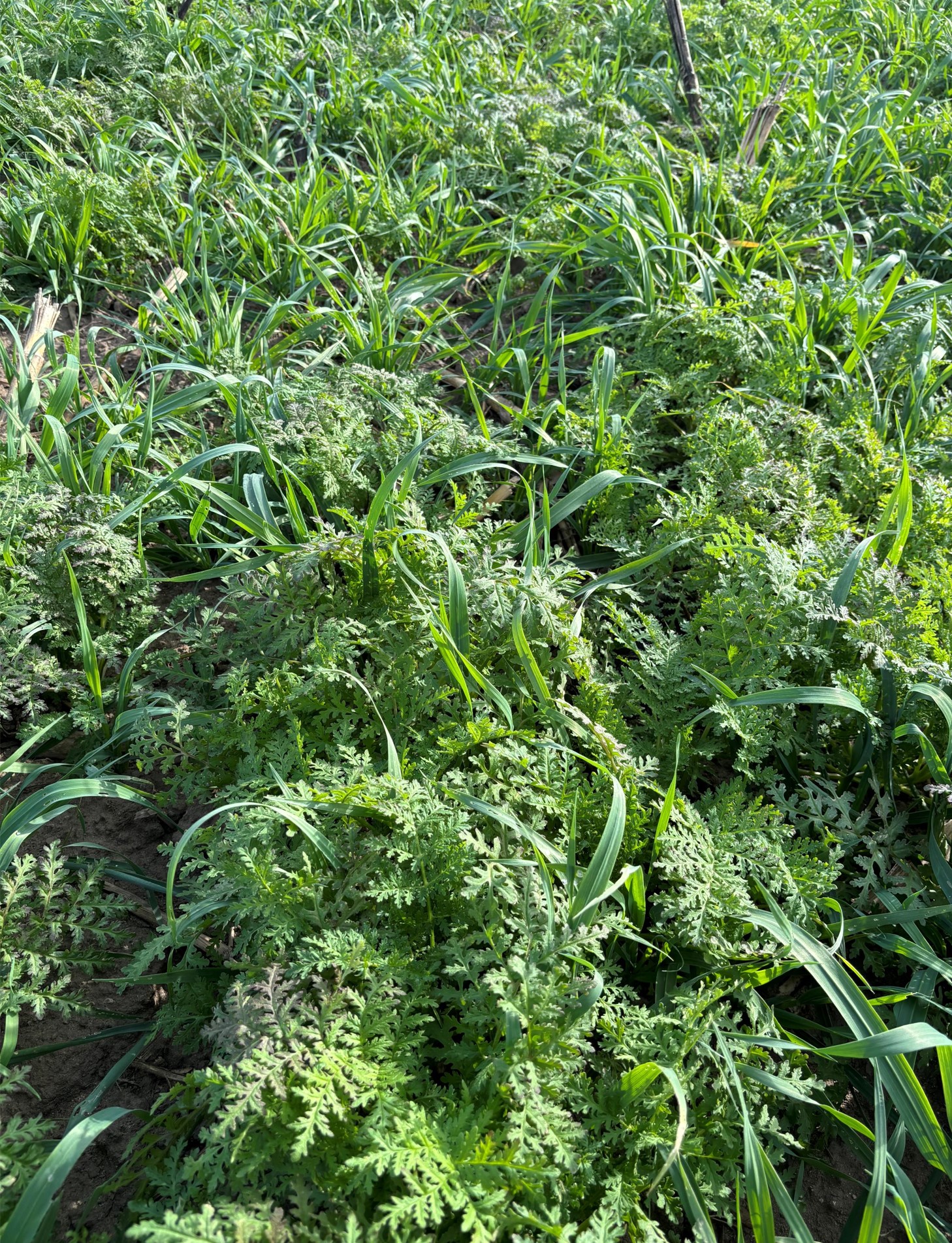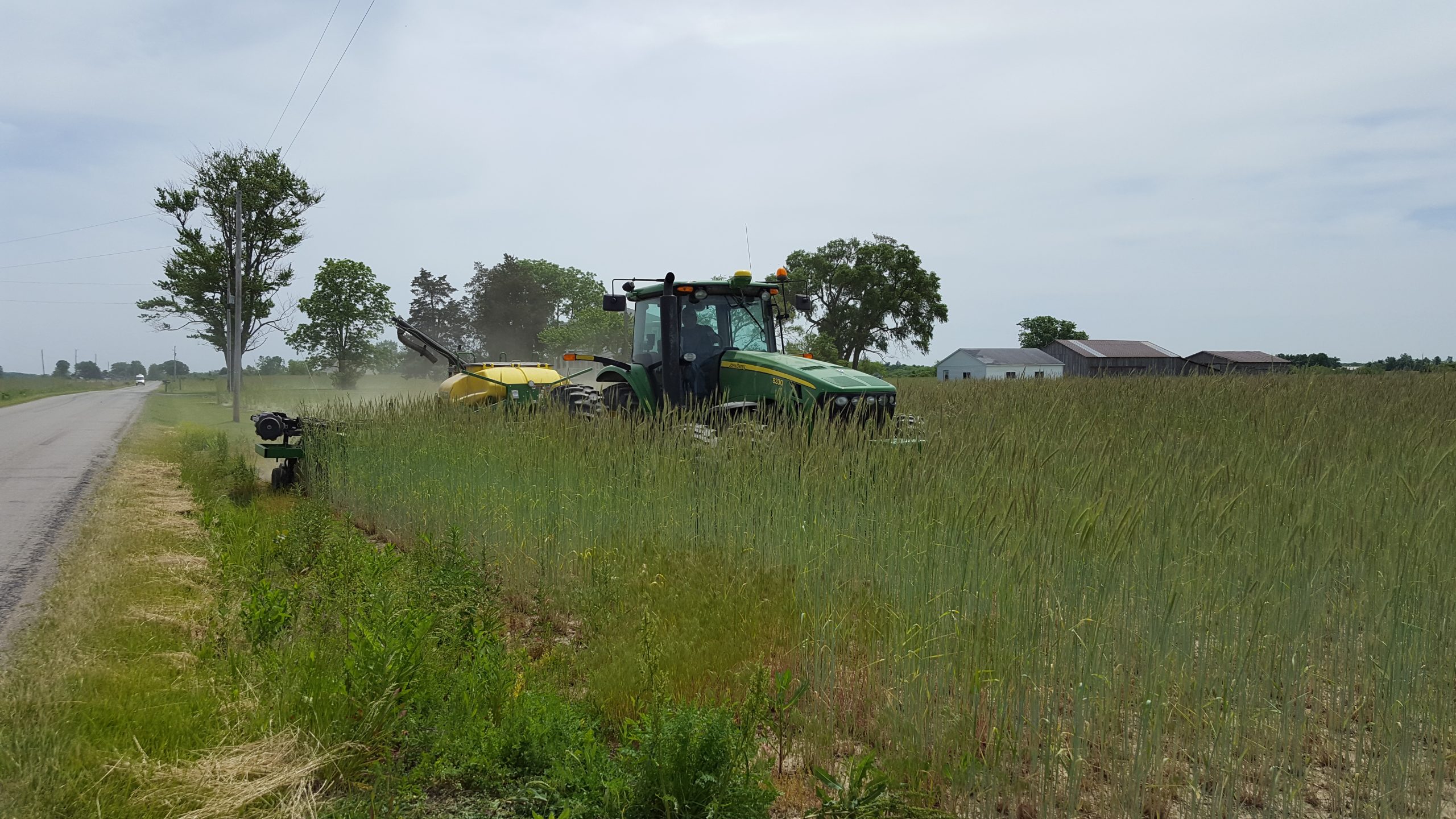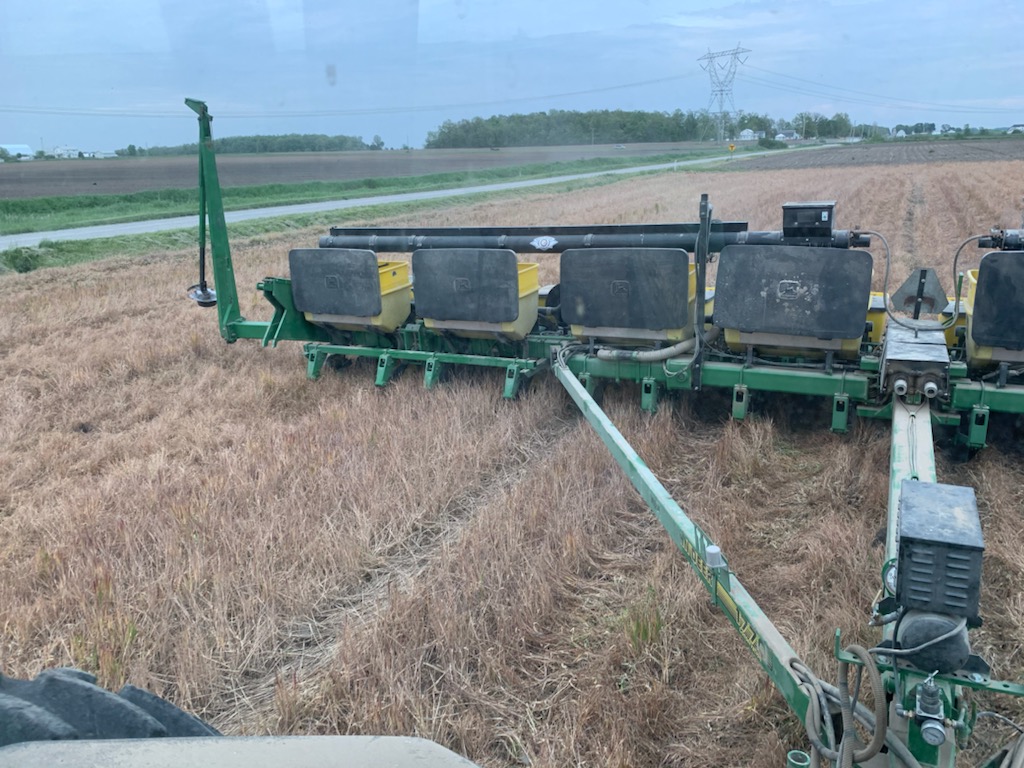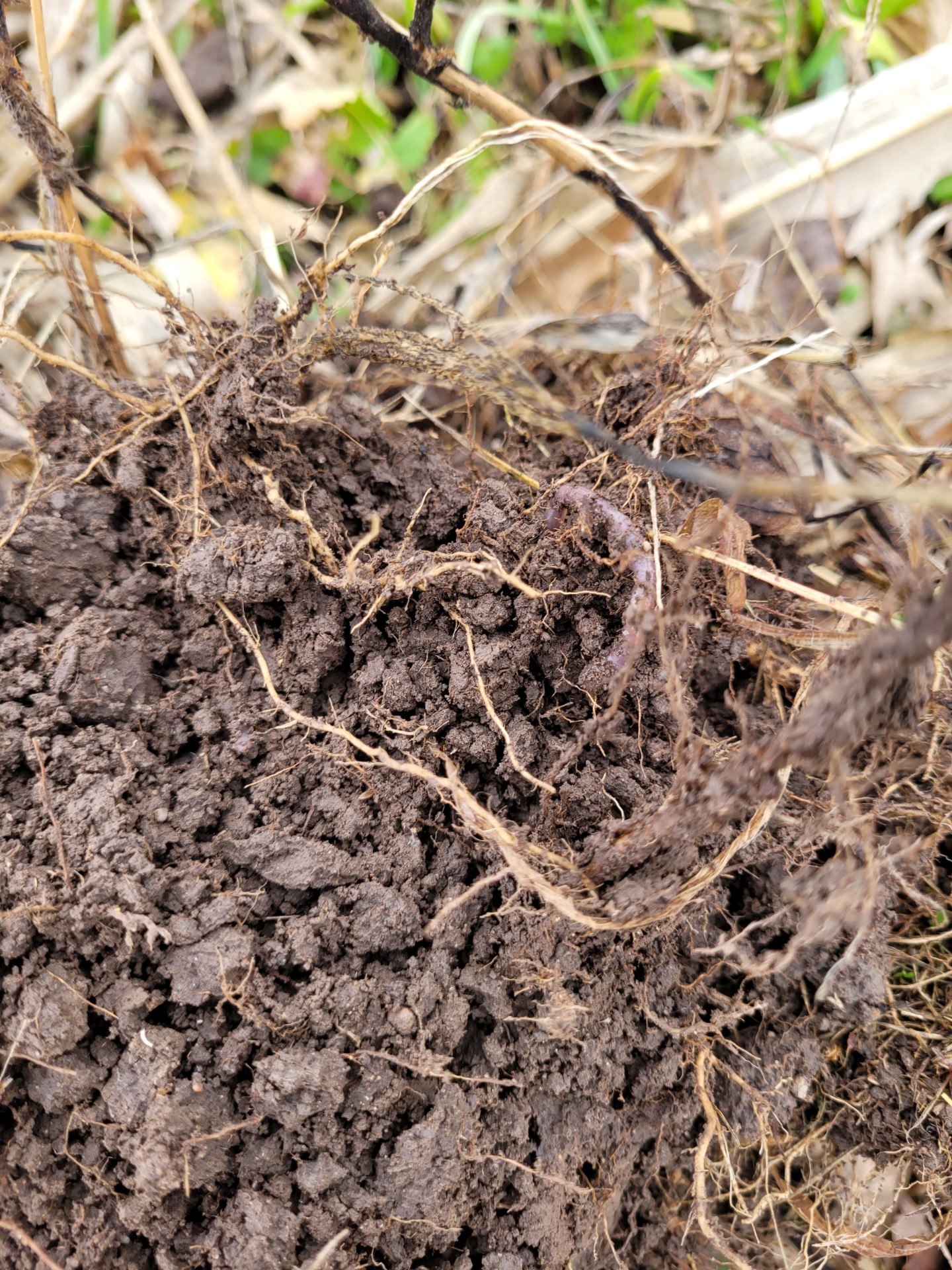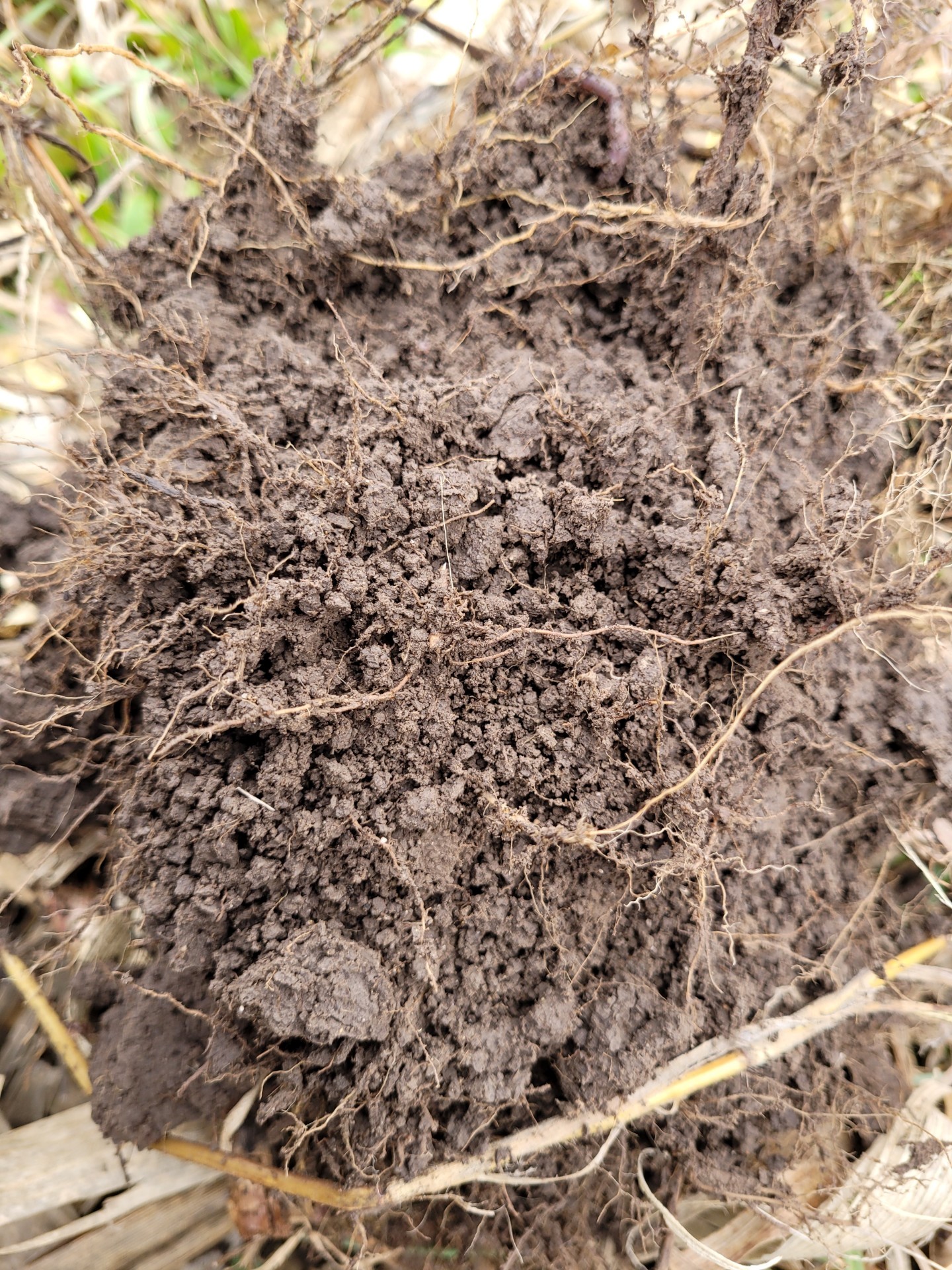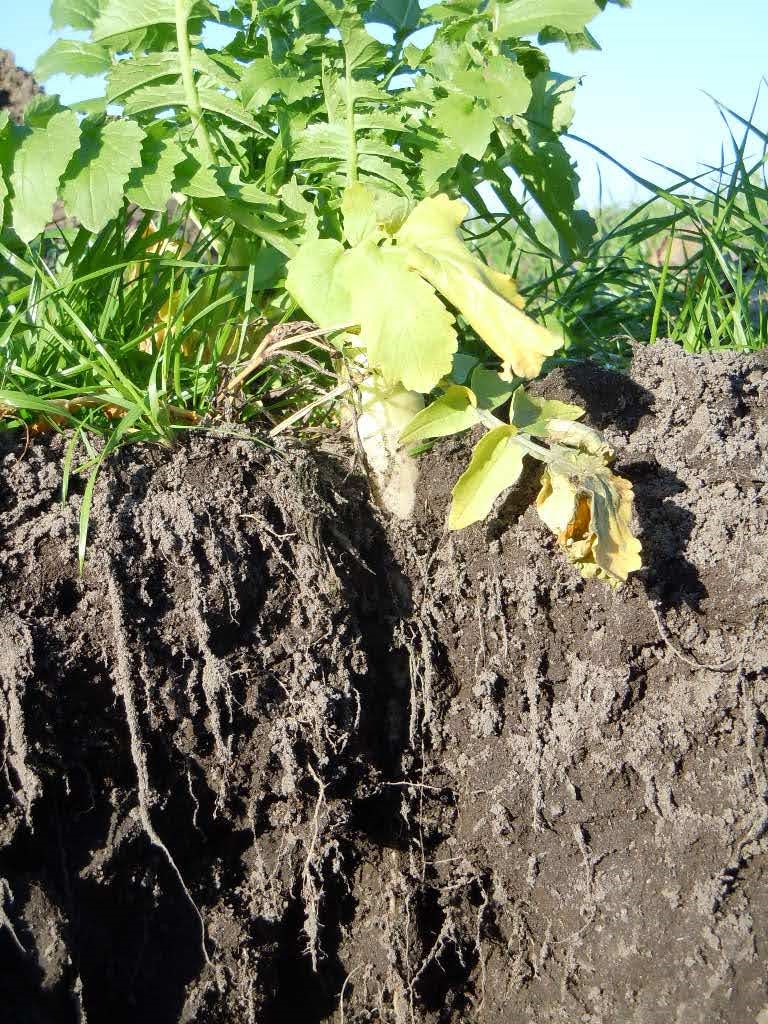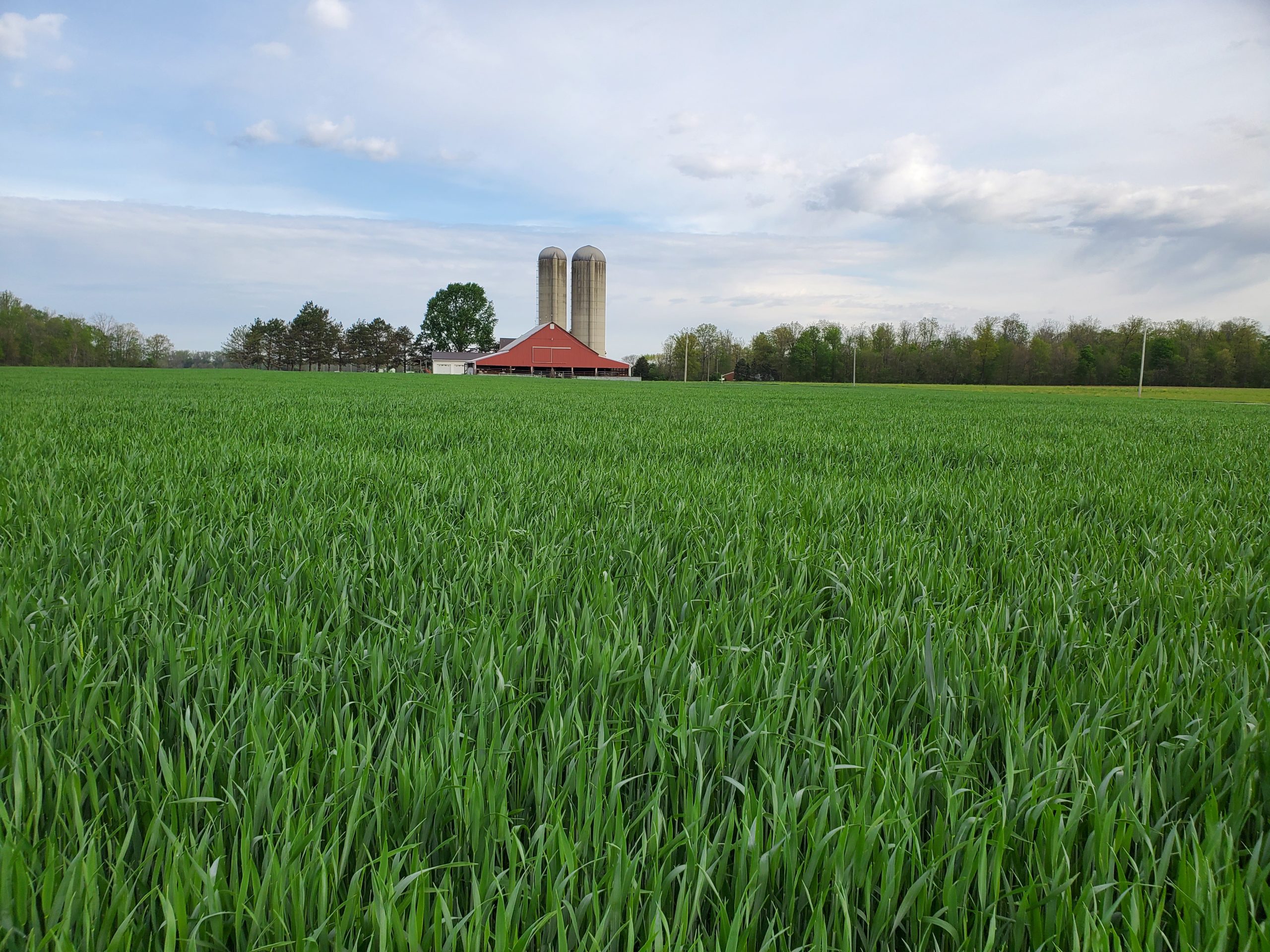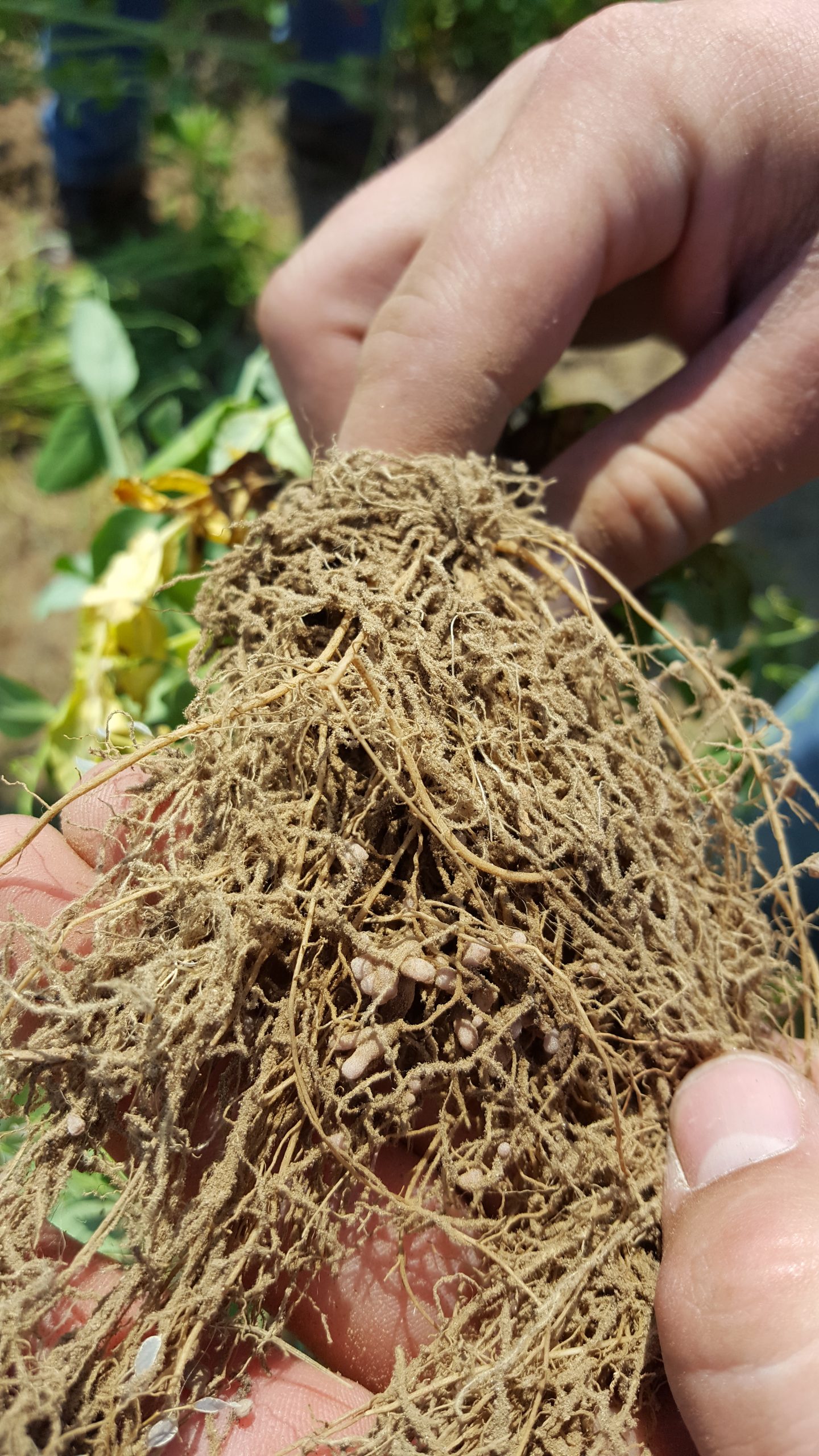9 Short and Long-Term Goals That Create Financial Value
1 – Soil Surface Protection
When you plant cover crops on your farm between your cash crop rotation, you protect the topsoil from water and wind erosion. The cover crop canopy shields the soil surface from weather extremes, allowing your soil to retain valuable moisture while minimizing evaporation.
Pictured above is a field of black oats and phacelia, planted after corn silage.
2 – Decreasing Undesirables
Plant high biomass cover crops at high rates to suppress weeds. They do this by direct competition and soil shading.
Cereal rye (above) releases allelopathic compounds that deter smaller seeded weeds from germinating.
Other cover crops help reduce nematode populations by controlling the winter annual weeds that serve as a refuge, or by releasing chemicals that biologically fumigate vulnerable soil environments (in sugar beet and potato rotations).
3 – Alleviating Compaction
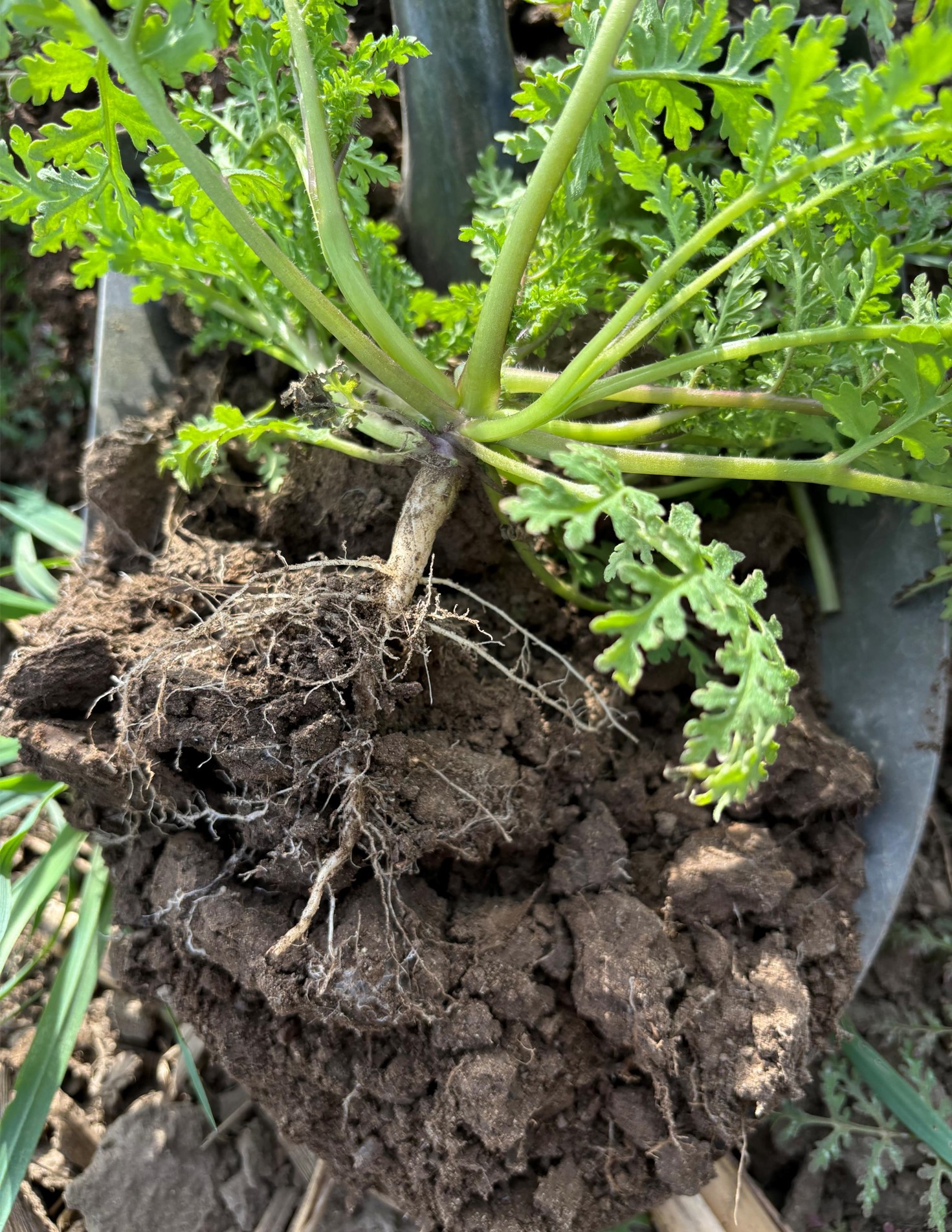
Many popular cover crops, such as annual ryegrass, radish, and phacelia (pictured above) are known for their prolific roots. These roots break through tough, compacted soil.
The root channels that you provide by planting cover crops improve soil aeration, water movement, and soil structure.
4 – Improving Soil Structure
Over time, living cover crops, along with earthworms and other beneficials, will methodically improve your soil structure.
Your cash crop roots will penetrate the soil with greater ease, allowing oxygen and microbial populations to grow.
As cover crops grow and die, soil aggregates are formed that catch organic matter and build soil structure. Improvements in soil structure ultimately allow for better utilization of nutrients and water.
The above picture shows corn being planted into Nutribuilder (annual ryegrass, crimson clover, radish).
5 – Nutrient Cycling
When you plant cover crops, they scavenge leftover nutrients from your preceding row crop and reduce run-off.
Depending on the species, phosphorus (P) and potassium (K) sequestered within the soil profile can be made available for successive cropping systems.
The picture above shows wheat after cowpeas and buckwheat.
6 – Nitrogen-Fixing
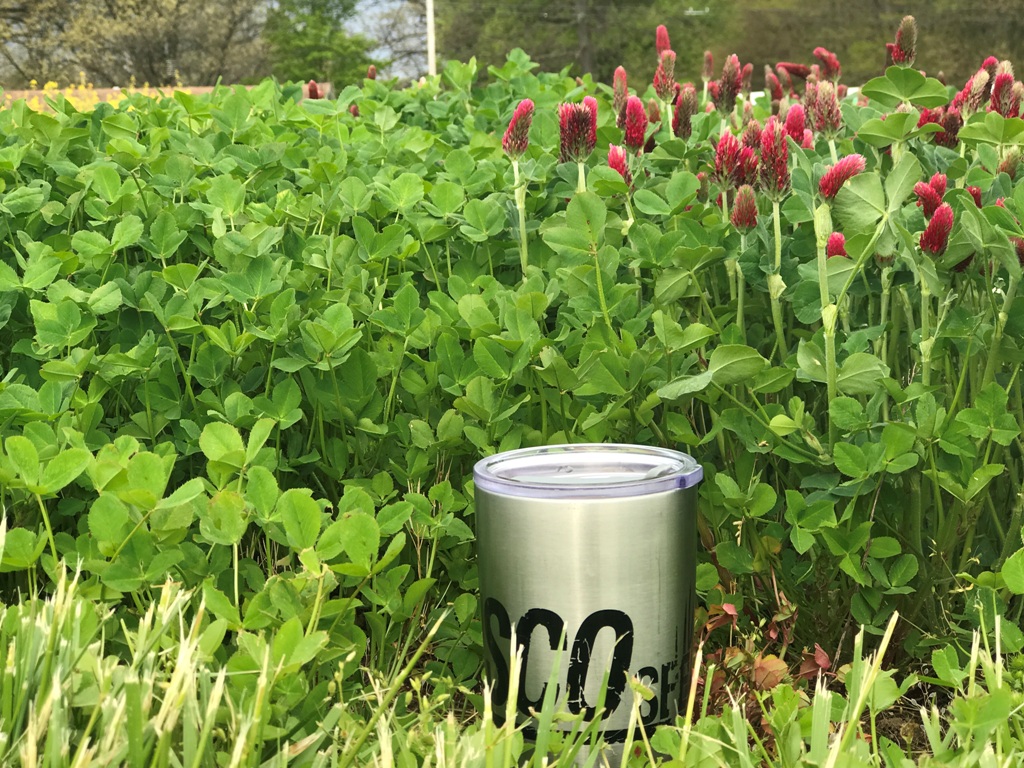
Over time, you may be able to apply less fertilizer as you utilize legume cover crops to convert nitrogen (N) from the air into nitrogen that your cash crop can use. Two excellent and popular examples are hairy vetch and balansa clover.
7 – Pollinator Benefits
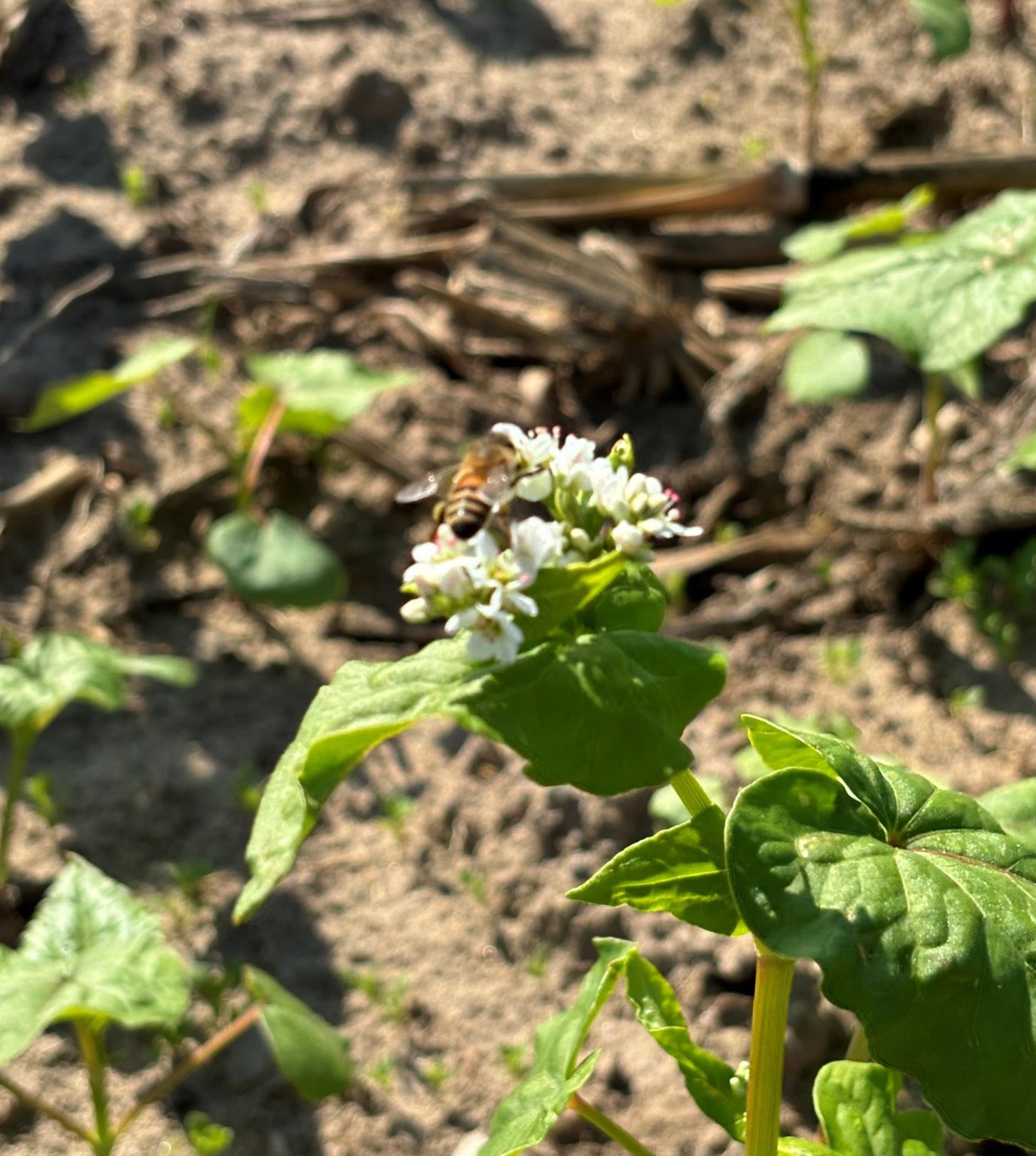
Many cover crops create the habitat, shelter, and overall biodiversity for pollinators and wildlife. Pictured above is buckwheat.
8 – Forage Contribution
There’s no better way to make cover crops pay for themselves than by using the growing biomass for livestock forage.
9 – Organic Matter (OM) Improvements
Integrating cover crops adds carbon, which feeds the soil food web, and enhances soil tilth and water holding capacity.
OM percentage within the soil expands as the cycle continues; more nutrients are securely stored as humus develops. Measuring OM increases is a long-term process, but not the life-long endeavor everyone once believed. In other words, you can improve your soil a lot faster than you think.
With all of this in mind, what is the next step?
1 – Select the right cover crops to help reach those benefits.
Different species have unique characteristics intended for distinct benefits and positive outcomes. The right species (and perhaps a distinct variety) will move the plan forward.
Conversely, utilizing the wrong cover crop in a given geography, rotation, or cropping plan can bring unintended consequences.
2 – Plot out a cropping plan to give the cover crop the best opportunity for success and understand that a few changes may be needed to maximize the potential.
Growers new to cover crops may consider starting with smaller fields or acreage, as new management considerations will undoubtedly emerge. Planting windows are crucial, so modifying crop rotations and/or shifting harvest dates slightly can make a big difference.
Don’t forget how pesticides can negatively affect cover crop performance as well.
3 – As soon as possible, make certain that equipment and labor are prepared and ready to go, as timely seeding is critical.
Work with CISCO Seeds to ensure seed is where it’s needed, understanding that most all cover crop seed originates outside of the Midwest, and it may take additional time.
4 – Be willing to make a few tweaks along the way.
The weather is unpredictable, so balancing goals and management expectations will be needed. Even the best-looking stands of cover crops can cause problems with challenging spring weather, or when other pests or difficulties unexpectedly show up.
Improving conservation and overall soil health takes time; growers would be wise to think long-term with their expectations and practice patience along the way.
